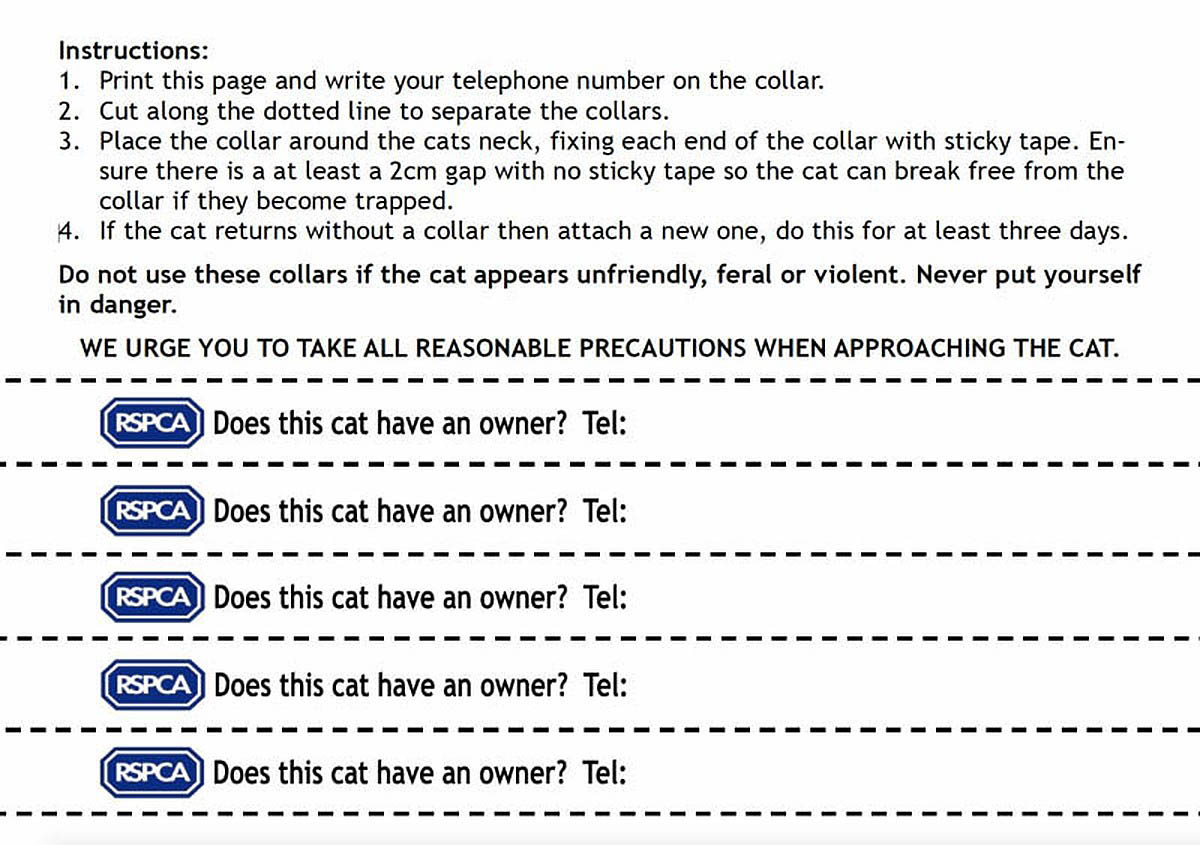Why is a cat hanging around?
There are several reasons a cat may appear at your doorstep. It is lost, it is a stray, or it is a local cat who is exploring the neighbourhood. There are clues to evaluate if the cat has a home or is living on the streets. This can help to determine what to do next.
The cat is lost
The most common reason cats become lost is that they have recently moved to a new area, have either escaped or been let out, and are unfamiliar with where they are, are unable to make their way back home. Cats are excellent escape artists and moving house is extremely stressful to a cat.
The cat is a stray
A stray cat is a formerly domesticated cat who is now homeless either because it has been abandoned, or lost and has been surviving on the streets or in the wild. Strays differ from ferals, who were born in the wild and have had no human interaction, displaying fear towards people.
It can be difficult to determine if a cat is stray or feral, but there may be some clues. A feral cat who has been trapped, neutered and returned (TNR), will have an ear notch or have had the tip of the ear removed. This enables people to see from a distance that the cat has been desexed, avoiding the need to trap and assess the cat.
Both stray and feral cats may have battle scars on the ears, nose and face from a life on the streets. The ears may be torn, the coat is unkempt and dirty, physical scars.
A cat who has a home and is exploring will typically have the appearance of a healthy cat and will appear well-fed and with a clean, healthy coat unless the cat is elderly or has an underlying medical condition (sometimes even loved cats can look unwell if they have a chronic disease).
Often a stray cat will decide to adopt a family, particularly if the residents have shown kindness to the cat. A pregnant cat will look for somewhere safe she can deliver her kittens. Does the cat look pregnant, is the belly enlarged and nipples prominent?
The cat lives nearby
If the cat is friendly and appears to be in good health, there is a good chance that it lives nearby and roaming the neighbourhood. Cats roam from 40 to 200 metres from their home, so there is a good chance that the cat’s home is not too far away.
I do not recommend feeding a cat who appears to be well cared for as it can encourage the cat to continue to visit for food. Most pet owners would rather their pet not be fed by well-meaning people as encourages the cat to roam, can lead to weight gain and in some cases, the cat may be on a prescription diet to manage a health condition and non-prescription food can interfere with this treatment.
What to do if a cat shows up
If the cat is in poor health, severely malnourished or injured, take the cat to a veterinarian, most have an emergency fund to treat strays, even if it is just the basic care to relieve pain and suffering or until the owner is found.
- Take a photo and post on local Facebook groups and lost and found pages
- Contact local veterinarians to see if anybody has reported a cat missing
- If you can catch the cat, take it to the veterinarian or rescue group to see if it has a microchip
- Put a paper collar on the cat, asking if the cat has a home and include your phone number, if the cat returns to your home with no collar, repeat again
- Place FOUND posters around the area and on community noticeboards
- Doorknock neighbours and ask if the cat is theirs or if it has been hanging around their home or garden too

Right-click the image above and select ‘save image as’. Open image, and print. Image credit, RSPCA UK
What to do if you can’t find the owner
If none of the above methods answers the question, then it is likely that the cat has been dumped or is missing a long way from home. You must always take reasonable steps to look for an owner before adopting a cat.
It is important to determine if the cat is a female and is caring for a litter of kittens who will not survive without their mother’s care. If you can get close enough, look at her nipples which will be enlarged if she is pregnant or nursing. Is the cat appearing and disappearing in the same place? Look under decks, balconies, in sheds and under bushes.
Always check with the local council before attempting any of the suggestions below, as there may be legal requirements in place involving lost, stray or homeless animals.
Adopt the cat
If you have formed a bond with the cat, adoption may be an option. Points to consider include;
- Are you renting or buying, if you are rending, do you have permission from the landlord or real estate?
- Can you afford to feed and pay vet bills for a new pet?
- Do you already have pets? Do you think they will accept a new addition?
The cat will need to be desexed (if it hasn’t already), treated for parasites and vaccinated. If you have resident cats, quarantine the new cat and introduce it to the home slowly. I strongly recommend FIV and FeLV tests at a minimum, and baseline blood tests (biochemical profile) are also helpful to evaluate the overall health of the cat.
Find the cat a home
If you are not in the position to adopt the cat, but would rather not take it to a shelter, it may be possible to find the cat a home. It is a lot more difficult to advertise animals online, as most social networks have rules in place banning the listing of animals on their platforms.
Word of mouth, local rescue groups, pet shops and veterinarians can help to spread the word.
Australian law dictates that a cat must be microchipped when it is adopted to a new home, and the onus is on you, the adopter to do. Always ask for a payment to deter people who are looking for a cat for sinister reasons.
If you do decide to find the cat a home, but cannot bring it into your house in the meantime, provide some shelter outside, especially if you live in a cold climate. An old dog kennel or large plastic container, with a cat-sized hole in the top and warm bedding, will keep the cat warm and dry.
Surrender the cat
If you don’t have the time or the resources to adopt the cat yourself or find it a home, a local rescue group or animal shelter may be able to help. If you are considering taking the cat to a shelter, try to find one which is no-kill if possible.

